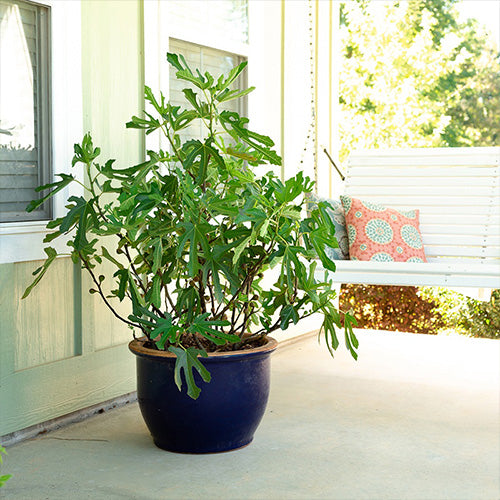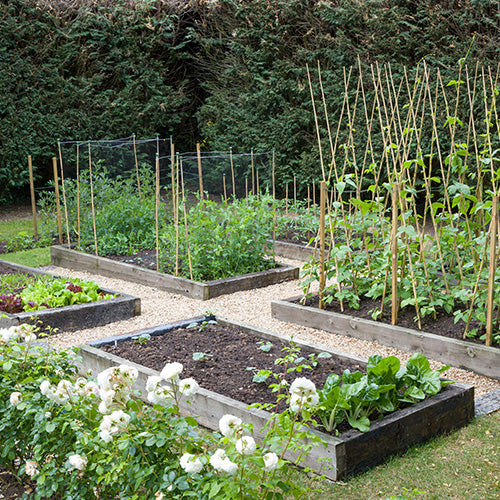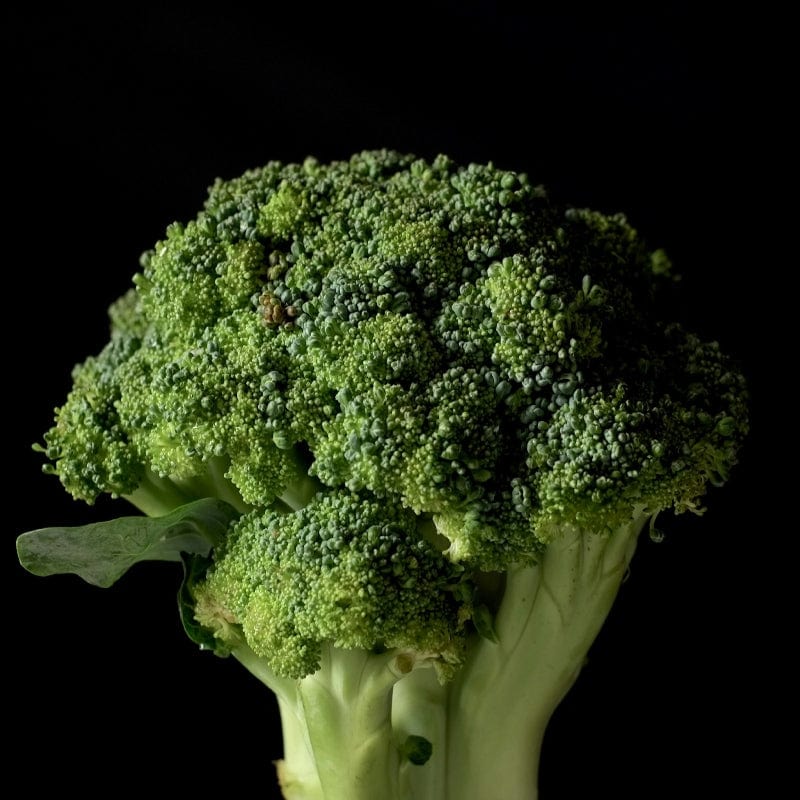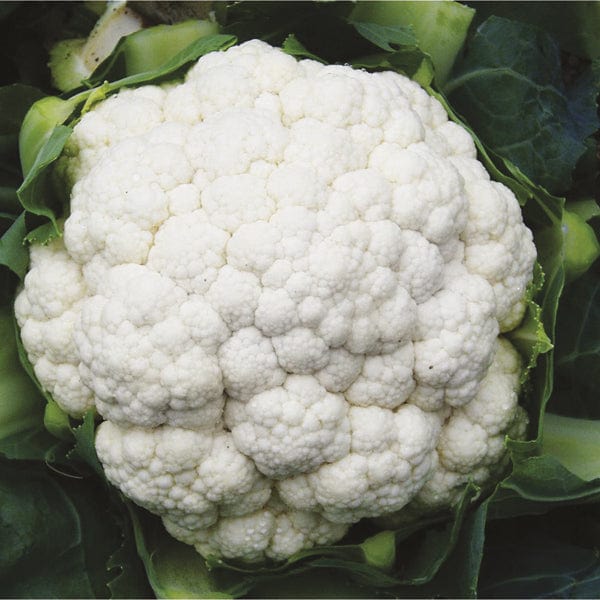What To Do First
After unpacking, inspect the roots and, if bare root and dry, stand the plants in a bucket of water for up to an hour to moisten the root system thoroughly. Ensure potted trees are well watered.
Planting of containerised trees can take place all year round but is inadvisable when the soil is too wet or frozen. Bare root trees can be planted anytime during their dormant period of November to April. They should be planted within 48 hours of arrival, if you are unable to do so temporarily 'heel' bare-root trees into a shallow trench on a spare patch of ground, covering the roots with moist soil.
Soil Preparation & Planting
Fruit trees occupy the same position in the garden for many years, so careful choice of site and good soil preparation are essential for good results.
Choose a sunny area of the garden, sheltered from strong winds. Where possible avoid planting in a known frost pocket. As they flower so early, a sheltered position is particularly important for pears, plums, damsons, greengages, cherries and hazelnuts in colder areas and for peaches, nectarines and apricots in all parts. The last three of these are best trained as fans on a warm wall in all but the south.
Most fruit trees can be grown on many different types of soil but, as far as possible, the soil should be fertile, well-drained and free of perennial weeds. Dig the area over thoroughly, adding manure and a general fertiliser such as growmore. A slightly acid soil is ideal (pH 6.5-7). Add lime if it is strongly acid. Hazelnuts are the exception to this as they enjoy lime and prefer a pH of 7.5-8.0. Also, a very rich soil is not needed and may lead to excessive growth.
For each tree dig a hole larger than the root system. Fork over the soil in the bottom of the hole. The stake should be in place prior to planting and should be at a 45° angle if planting a potted tree and straight if planting a bare root tree.
Place the tree in the hole, fairly close to the stake so that it is easy to tie it in whilst keeping the tree upright and replace soil to cover the roots. Shake the tree up and down to get the soil around the roots. Check that the 'union' will be at least 3 inches above the eventual soil level and raise the tree if necessary. Gently firm the soil around the roots, replace the remaining soil, and then firm the soil with your boot and level off. Tie the tree to the stake with an adjustable tree tie. This will need loosening off from time to time as the tree grows.
For trees that are to be trained in a bush form, plant 3.0-4.5m (10-15ft) apart, locating apricots, cherry, plums, nectarines and peaches at the wider and other types at the narrower of these spacings. Trees to be fan-trained need a wall space about 3.6-4.5m (12-15ft) long.
All Patio trees should be permanently staked at all times. Use good quality compost such as John Innes No 3. Mulching is also recommended to prevent the compost drying out too quickly.
Aftercare Tips
For the first year keep newly planted trees well-watered, ensuring the soil is moist at all times, always water thoroughly to prevent shallow rooting. Apply a slow-release fertiliser at recommended rates around each tree in February and mulch with organic matter such as well-rotted manure or weed-free garden compost. For at least the first three years, keep the ground around the bases of the trees free of grass and other plants so they don’t suffer from competition.
Pruning
A major advantage of the maiden trees we supply is that they can be trained into any required tree form. However, coverage of the training required for all of the different possible forms is beyond the scope of these notes, which cover only the training required to produce the commonly used bush form. [For more information on this subject we can recommend the Royal Horticultural Society’s ‘Fruit Garden Displayed’ or Dr D G Hessayon’s 'Fruit Expert'].
After planting all trees must be pruned with the exception of Plums, Cherries, Peaches, Nectarines and Apricots, for these wait until April to avoid silver leaf disease. Remove any unwanted upright branches at the top of the tree. Cut back all the leading shoots by one third or a half, to a bud facing the direction in which further growth is required. This strengthens the framework and promotes more young shoots (further branching). These shoots should be shortened by about a quarter of their length during the second winter after planting.
When shortening a shoot, cut close to a bud otherwise the stub left will die back and may become diseased. When completely removing branches, cut as close as possible to the base.
Apples & Pears
First year - Prune the main leader back to 25cm. Cut just above a bud facing the opposite way to the previous year if possible to give a more even stem. Cut back all the remaining side branch leaders by half their length to a bud outward facing.
Second / third year - when the first side shoots have themselves branched, cut back the leading shoot from each by about half. Then select sufficient good laterals to fill any gaps in the branch framework and similarly shorten these by half. Cut any other laterals back to 4 buds.
Subsequent years - pruning should be less severe with leaders being cut back by about a third and laterals to 4-6 buds. Any dead, diseased, broken, crowded or crossing growths should also be removed and the tree centre kept open.
Peaches & Nectarines
Up to the third year, pruning is very similar to that of apples and pears except that it should not be done until April and the main stem is not cut back as hard in the first year so as to allow a trunk about 90cm (3ft) long to develop. All pruning cuts should be protected with wound paint. As most fruit is produced on the previous year's wood, however, the pruning of cropping trees is rather different involving removal of a portion of the 2-3-year-old wood each season, cutting back to young replacement shoots. At the same time, any dead, diseased, crossing, crowded or broken shoots should also be removed.
Plums, Damsons, Greengages, Cherries, Apricots, Aprium & Pluot
Because of the risk of disease infection, the pruning of these trees should be delayed until April. In the first 2-3 years after planting pruning is otherwise much the same as for apples and pears except that, as with peaches and nectarines, the main stem is left a little longer at about 90cm (3ft). Subsequently, only the removal of dead, diseased, broken, crowded or crossing branches is normally needed.
Quince
These may be grown as freestanding shrubs or used to create a hedge. Prune back long shoots in Sept/Oct.
Medlar
Just prune this variety lightly in late winter. Fruits are very hard and acidic. They become edible after being softened by frost, or naturally in storage given sufficient time (bletted). Once softening begins, the skin rapidly takes a wrinkled texture and turns dark brown, and the inside reduces to a consistency and flavour reminiscent of apple sauce.
Mulberry
You do not want to prune too often as these tend to exude a lot of tree sap when pruned. Just cut out the dead, diseased and damaged branches and one or two branches if they spoil the overall shape.
Nuts
These are usually grown as open centred bushes on a short main stem of about 45cm (18"). Select 3 or 4 laterals to form a main framework and remove all other laterals that are not required. In following years repeat this process each February until an open framework of 8 to 10 strong branches has been achieved. Once the main framework has been created, the main laterals can be stopped when they reach a height of 1.8-2.1m (6-7ft). This will encourage sideshoots which will bear the catkins and flowers. By the fourth year pruning can be kept to a minimum, removing only dead, damaged or misplaced stems. In August, you can use a technique called "brutting" to get established bushes to crop more heavily. By hand, break the longer side-shoots of this season's growth by bending in half but leave the broken section hanging on. This opens up the bush and lets in the light to encourage more female flowers to form on the weaker growth. It also reduces vigour.











